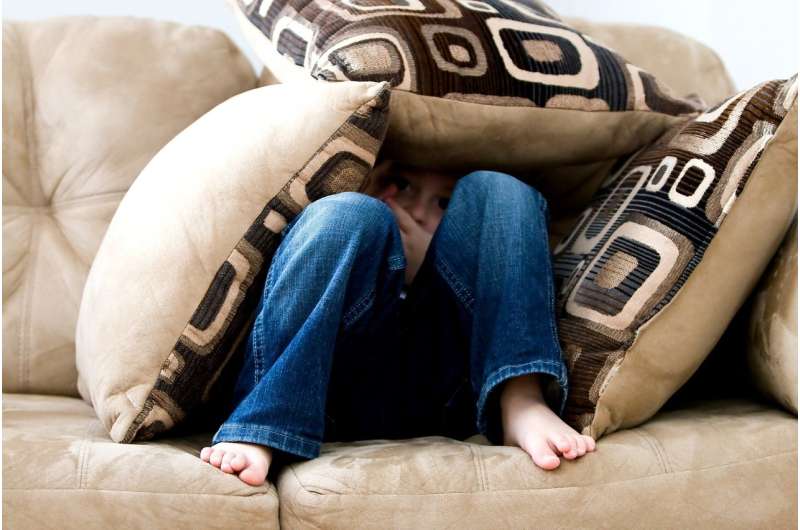Mental health concerns and traumatic events are common among young children who die by suicide


A study published today by Nationwide Children’s Hospital researchers found that although the circumstances around any suicide death are complex, there are often shared characteristics and experiences among young children who die by suicide.
The study, published in JAMA Network Open, showed that suicide in children is most often associated with mental health concerns, prior suicidal behavior, trauma—including abuse, neglect or exposure to domestic violence, suicide or the death of a family member—or peer, school or family-related problems. Suicide deaths were commonly preceded by a negative or “triggering” event on the day of death, such as an argument between the child and a family member or disciplinary action.
Suicide is the eighth leading cause of death among youth aged 5 to 11 in the United States, and suicide rates in this age group increased nearly 15% annually between 2012 and 2017, according to recent mortality statistics from the Centers for Disease Control and Prevention. An enhanced understanding of the potentially unique circumstances surrounding these deaths is critical to improving suicide prevention among at-risk children in this age group.
The team of researchers led by Donna Ruch, Ph.D., research scientist in the Center for Suicide Prevention and Research in the Abigail Wexner Research Institute at Nationwide Children’s Hospital, and Jeff Bridge, Ph.D., director of the center, examined common characteristics and precipitating circumstances of youth suicide deaths using the National Violent Death Reporting System (NVDRS), a system that collects data on suicide and violent deaths from coroner’s and police reports.
A total of 134 suicide deaths of children aged 5–11 years between 2013 and 2017 were identified from the database. Most were among children aged 10 to 11, and 75% of the children in the study were male. Among children who died by suicide, 31% experienced a mental health concern or diagnosis, with attention deficit hyperactivity disorder (ADHD), mood disorders such as depression and co-occurring disorders being most common. A prior psychiatric hospitalization was documented in 24% of children in the study, and 78% were receiving mental health treatment before their deaths.
More than 25% of children in the study had experienced one or more traumatic events, and many children in the study experienced one or more family-related circumstances including divorce or custody issues, parental substance abuse or a family history of psychological problems or suicide. Findings suggest family-based interventions and a trauma-informed approach towards youth suicide prevention may also play an important role in preventing suicidal thoughts and behaviors in childhood.
Researchers also found children in the study were disciplined on the day of suicide in 32% of cases. Disciplinary actions often followed a school-related issue or an argument between children and their parent or guardian and involved sending children to their bedrooms in half of cases or taking away a technological device in 29% of cases.
“We found these major themes were often co-occurring,” says Dr. Ruch. “Children with mental health concerns or a history of suicidal behavior often had traumatic histories related to adverse family situations. School problems frequently resulted in parent-child conflicts and were more likely to occur in children with mental health concerns.”
The study also found common patterns in how the suicide deaths occurred. While most suicides in this age group occurred by hanging/suffocation in the child’s bedroom, 19% occurred by firearm. In all cases where detailed information on these deaths was available, children had obtained unsecured guns from within their homes, where they were stored loaded, unlocked, with ammunition or otherwise unsafely. Educational programs, youth-focused firearm laws and safe firearm storage public awareness campaigns could improve safe storage practices, and evidence suggests this would protect against unintentional firearm shootings and suicide attempts in all age groups, including young children.
A prior history of suicide attempts was reported in 12% of children in the study, and a history of suicidal ideation or suicidal statements was reported in about 25% of cases. More than 10% of children expressed these comments to parents, teachers or school employees on the day of their deaths, suggesting suicidal statements should be taken seriously in younger children.
“These findings underscore the importance of early suicide prevention efforts that include improvements in suicide risk assessment, family relations and lethal means safety, particularly safe firearm storage,” says Dr. Bridge.
“We also want to emphasize that families and clinicians should not be overly alarmed by our findings. The themes and precipitating circumstances we identified are also experienced by children who will never engage in suicidal behavior. But identifying these can help inform prevention efforts,” says Dr. Ruch.
Source: Read Full Article